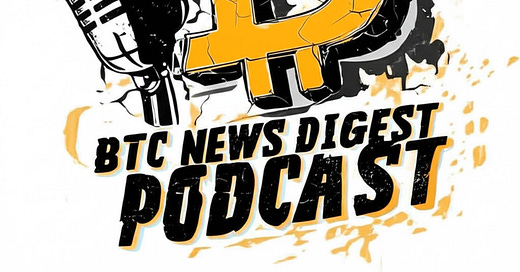Executive Summary: The past 48 hours have witnessed a significant bullish reversal for Bitcoin and the broader digital asset market, marked by a decisive surge past $105,000. This recovery was driven by a powerful convergence of macroeconomic tailwinds, including a US-brokered ceasefire between Israel and Iran and increasingly dovish commentary from a key Federal Reserve official hinting at a July interest rate cut. Simultaneously, institutional and corporate adoption of Bitcoin has accelerated, exemplified by Anthony Pompliano's announcement of ProCap Financial, a $1 billion Bitcoin treasury SPAC aiming for active yield generation. Unwavering inflows into spot Bitcoin ETFs, even during geopolitical turmoil, underscore the "sticky" nature of institutional capital. This briefing details these interconnected themes, highlighting the evolving role of Bitcoin as a macro asset, a productive corporate treasury tool, and an increasingly integrated component of the global financial system.
Key Themes and Important Ideas:
1. Bitcoin's Price Action: A Resilient "Risk-On" Rebound and Maturing Market Structure
Dramatic Reversal: Bitcoin staged a powerful rebound, surging past $105,000 after dipping below $100,000 due to escalating geopolitical tensions. This demonstrates a "V-shaped recovery" from a fear-driven sell-off.
Macroeconomic Catalysts: The rebound was directly ignited by "the announcement of a US-brokered ceasefire between Israel and Iran, which immediately de-risked global markets," and "increasingly dovish commentary from a key US Federal Reserve official, hinting at a potential July interest rate cut."
Stress Test and Liquidation Event: The weekend dip saw "over $1 billion in leveraged crypto positions were liquidated, with an overwhelming 95% of these—approximately $915 million—being long positions." This "massive deleveraging event" revealed a market significantly overexposed.
"Fake Down" Bullish Signal: Analysts interpret the rapid reclamation of critical support levels after a breakdown as a "fake down" or "liquidity grab," effectively turning a potential structural breakdown into "a launchpad for a new upward trend."
Key Technical Levels: The zone between $103,000 and $104,631 is identified as the "new critical support area" (confluence of EMAs), while $108,500-$109,000 is the immediate resistance, a decisive breakout above which could target $130,000-$135,000.
Mixed Momentum Indicators: While On-Balance Volume (OBV) shows a "strongly bullish signal" indicating "hidden accumulation" by institutional investors, the Relative Strength Index (RSI) highlights a "potential negative divergence," suggesting a possible consolidation period.
2. Capital Flows: Unwavering Institutional Confidence via ETFs
Resilient ETF Inflows: Despite geopolitical scare, "there were no significant outflows" from U.S. spot Bitcoin ETFs. Post-ceasefire, "institutional demand roared back to life, with spot Bitcoin ETFs recording over $350 million in net inflows."
"Sticky" Capital: This data provides "compelling evidence of a fundamental shift in Bitcoin's investor base," indicating that "the capital flowing into these regulated ETF products is not 'hot money' that flees at the first sign of trouble." Glassnode confirmed this as a "notable signal of investor confidence."
Maturation of the Market: The weekend's events served as a stress test, revealing a dynamic where "a leveraged, fear-driven flush-out of short-term traders was met with calm, strategic accumulation by institutional spot buyers." This "replacement of 'weak hands' with 'strong hands'" is a "classic sign of a developing asset class."
Structural Demand Floor: The "institutional bid, channeled through vehicles like ETFs, is providing a structural floor of demand that did not exist before," further legitimizing Bitcoin as a macro asset.
3. Macro-Catalysts: Dovish Fed and Global Regulatory Progression
Fed's Dovish Pivot: Fed Governor Michelle Bowman, typically hawkish, signaled openness to a "July interest-rate cut," significantly increasing the "perceived probability of a rate cut occurring sooner than previously anticipated." This lowers the opportunity cost of holding Bitcoin and drives capital toward risk assets.
Global Regulatory Frameworks:Turkey: Implemented new regulations for crypto transactions to combat money laundering and fraud, including limits on stablecoin transactions and mandating "travel rule" application. While restrictive, this moves crypto into a "defined, albeit strict, operational framework."
Japan: Proposed reclassifying cryptocurrencies as "financial products," creating a "clear legal pathway for the approval of spot Bitcoin ETFs in Japan" and potentially a more favorable 20% flat capital gains tax.
South Korea: Reports indicate a move toward spot crypto ETF approval, targeting 2025, opening up another dynamic Asian market.
Integration, Not Isolation: These global moves confirm that leading financial centers are no longer debating if they should regulate crypto, but how. This convergence "of integrating digital assets into existing financial frameworks" removes a key barrier for large-scale institutional investors.
4. Corporate Treasury Revolution: Beyond Balance Sheet Holdings to Active Yield Generation
ProCap Financial - A New Paradigm: Anthony Pompliano's ProCap Financial, going public via SPAC (CCCM), raised over $750 million to acquire and hold up to "$1 billion of Bitcoin on its balance sheet."
Active Bitcoin-Native Strategy: Unlike passive holders, ProCap Financial aims to "actively use its substantial Bitcoin balance sheet to generate revenue and profit through a variety of sophisticated financial strategies, including lending, trading derivatives, and offering other capital markets products and services." This shifts Bitcoin's role "from a simple, defensive inflation hedge...into an active, productive, yield-generating platform."
Wall Street Validation: The deal is backed by "top-tier Wall Street institutions such as Citadel, Susquehanna, and Jane Street," validating the "Bitcoin-as-a-productive-asset" thesis and signaling a viable business model built on Bitcoin.
Broadening Corporate Adoption: The number of companies holding Bitcoin has "nearly doubled in just a few weeks, growing from 124 to approximately 240," now controlling "around 4% of the total circulating supply of Bitcoin."
Diverse Industry Adoption: Examples include Cardone Capital (real estate, purchased 1,000 BTC, plans for 3,000 more), Trump Media (reaffirmed $2.3B BTC investment plan), Panther Metals (using $5.4M BTC as collateral for acquisition), and Sequans (raising $384M for BTC treasury).
"Bitcoin Treasury Trend is the New Altseason": Adam Back's observation suggests sophisticated investors are increasingly favoring regulated, publicly traded companies holding Bitcoin over more volatile altcoins.
Integration into Mainstream Finance:Mortgage Qualification: The Federal Housing Finance Agency (FHFA) is reviewing whether "cryptocurrency holdings...can be considered as eligible assets when qualifying for a mortgage," a "monumental step" for recognizing digital assets as personal wealth.
Stablecoin Strategy for Visa: A senior Visa executive stated "all money-moving institutions will need to have a clear stablecoin strategy in place within the current year," indicating rapid integration of crypto-based payment rails.
Fed Scraps "Reputational Risk" Scrutiny: The removal of this framework, seen as "Operation Chokepoint 2.0," eases a "significant bottleneck for crypto companies in the U.S.," improving banking access.
5. Ecosystem Integrity: Security Innovations and Network Health
Ledger's Offline Recovery Key: Ledger launched an "Offline, ID-Free 'Recovery Key'," an NFC-enabled smart card for secure, offline self-custody recovery. This addresses past community criticism by being "Always Offline" and requiring "No Identification Required," with "Open Source" code for transparency. This sets "a new industry standard" for self-custody.
Robust Network Health: Bitcoin's hashrate reached a "new all-time high of 946 Exahash/second" (as of June 14), demonstrating miner confidence post-halving. A subsequent 30% drop is "a natural and expected market dynamic," triggering a "significant downward difficulty adjustment," a feature of Bitcoin's "brilliant self-regulating design."
Core Development Debates: Ongoing discussions among Bitcoin Core developers regarding "limiting non-financial data transactions" (due to Ordinals/Inscriptions) and the rise of alternative clients like Bitcoin Knots, while raising "low-probability, high-impact tail risk of a potential future chain split," are also "a sign of a healthy, decentralized development process."
Conclusion: The past 24 hours unequivocally demonstrate Bitcoin's deep integration into the global macro landscape and its maturing market structure. The asset proved its resilience by absorbing geopolitical shock and rebounding strongly, supported by resilient institutional spot buying. The groundbreaking ProCap Financial SPAC marks a pivotal evolution in corporate strategy, shifting Bitcoin from a passive hedge to an active, yield-generating platform. Combined with a dovish Federal Reserve outlook, advancing global regulatory frameworks, and continued ecosystem innovation, the medium-term outlook for Bitcoin is powerfully bullish, despite some cautionary technical signals. The key resistance at $108,500-$109,000 remains the critical level to watch for confirmation of the next major leg of the bull market.












Share this post